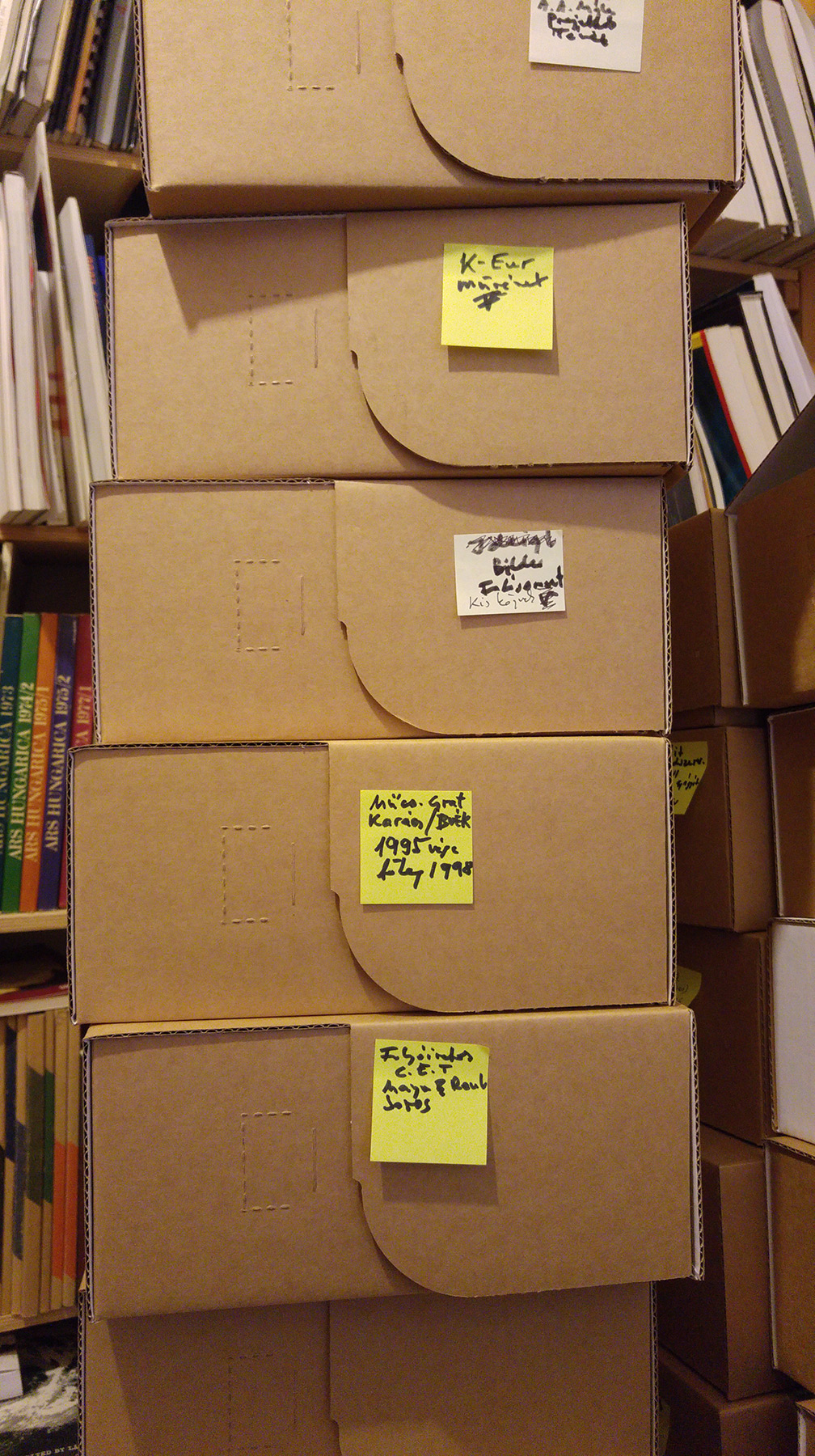László Beke joined the progressive art scene as a young art historian at the end of the 1960s and soon became an active participant and a main organizer of related events. These activities ran parallel to the tasks at his official workplace, where he researched Medieval enamel work.
Beke was drawn to documentation from his youth. At the age of 14, for example—while preparing to become a photo reporter—he recorded the data of each photograph he had taken in a copybook. These negatives and notes are also part of the photo section of the bourgeoning archive, which has grown to include 10,000 items.
Beke became interested in the conceptual approach to art through the lectures on linguistics, semiotics and structuralism that he attended during his university years. The conceptualization of art by Joseph Kosuth influenced his views, as a consequence of which he refused the position of critic, instead engaging in partnership with artists as an art historian interested in contemporary art.
According to the view of art history today, the history of Hungarian conceptual art started with his project “Imagination/Idea” initiated in 1971 (the materials of the project were published not long ago in book format in English as well). This project started as an exhibition. Beke appealed to artists he knew with a double objective: first to draw an overview of the current status of progressive art tendencies; and to bridge existing exhibition and publication difficulties.
Furthermore, Beke intended to expand the boundaries of visual arts (therefore he sent the appeal to poets as well) and he wanted to promote the conceptual thinking that he felt was growing by then (the motto of the appeal was a quote from Lawrence Weiner: “WORK = the DOCUMENTATION OF THE IMAGINATION/IDEA”). However he did not expect concept works exclusively, but all sorts of ideas and plans that were unrealizable at that time.
Finally, 31 artists responded (originally he sent the appeal to 28). The materials received were presented in Beke’s tiny apartment, where he could only host two visitors at a time due to lack of space. A total of 80 people visited him at his apartment. Beke considered the action to be a success and wanted to show its extended version at an exhibition planned at the King Stephen Museum in Székesfehérvár, but the body responsible for all exhibitions at that time finally decided not to permit it.
Beke initiated several similar projects during the years, such as “Tükör/Mirror/Spiegel/Miroir,” “Cobblestones and Gravestones” and “Meeting of Czech, Slovak and Hungarian Artists.” The “Handshaking Action” held in 1972 at the Chapel Studio in Balatonboglár remained memorable due to the photographic tableau taken in which thirteen Hungarian and eleven Czech and Slovak artists shake hands. Each participant received a copy of this tableau.
The symbolism of the action according to Beke was that “people could resist political scare-mongering and could approach each other without prejudices” (in the context of the role played by the Hungarian army in the occupation of Czechoslovakia by Warsaw Pact troops in 1968).
The memory of Budapest in 1956 and Paris in 1968, the demonstrations held in March 1972, the platitudinous notions of socialist art and a recently made, initially banned and then suddenly permitted film by Gyula Gazdag, A sípoló macskakő (The Whistling Cobblestone), provided the context for the action “Cobblestones and Gravestones.”
The collection was presented as a slide show during the “Direct Week” organized by Gyula Pauer and Tamás Szentjóby at the Chapel Studio in Balatonboglár. "This was the best lecture of my life. It lasted approximately 20 minutes, then Pauer turned the projector off by accident, it short-circuited and nobody ever knew how it ended, but I found this very important."
Beke’s archive became richer during the decades. Beginning in 1970, he created his own concepts as well, filing them under the category “unknown artist.” There are also collections related to certain topics he was planning to write about. The materials collected in approximately 1,200 boxes reflect his widespread interests.

